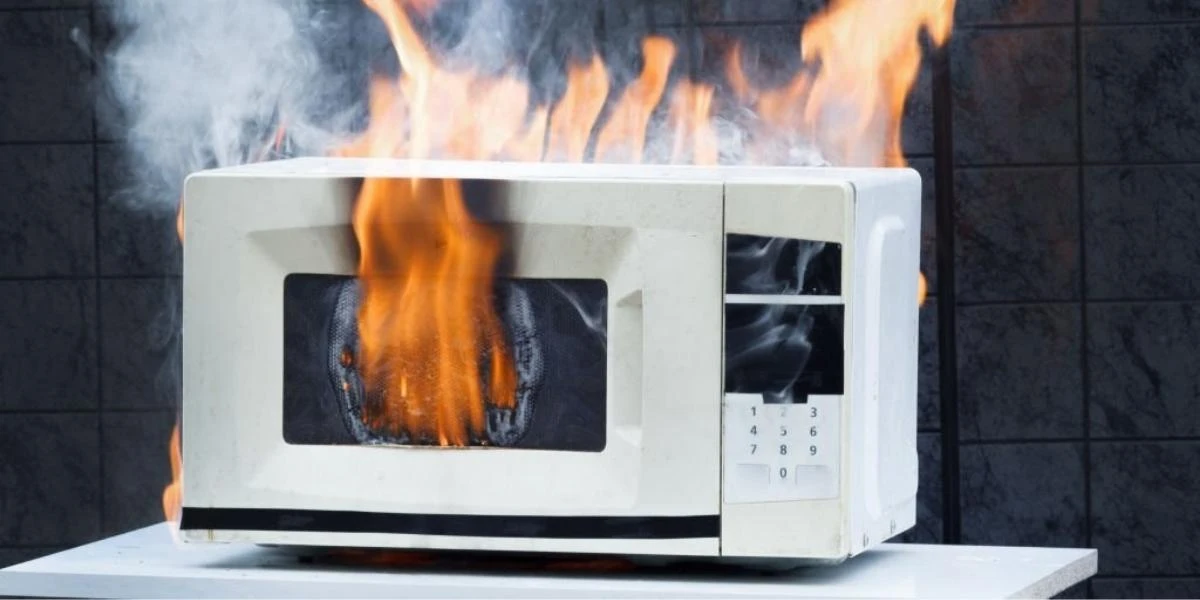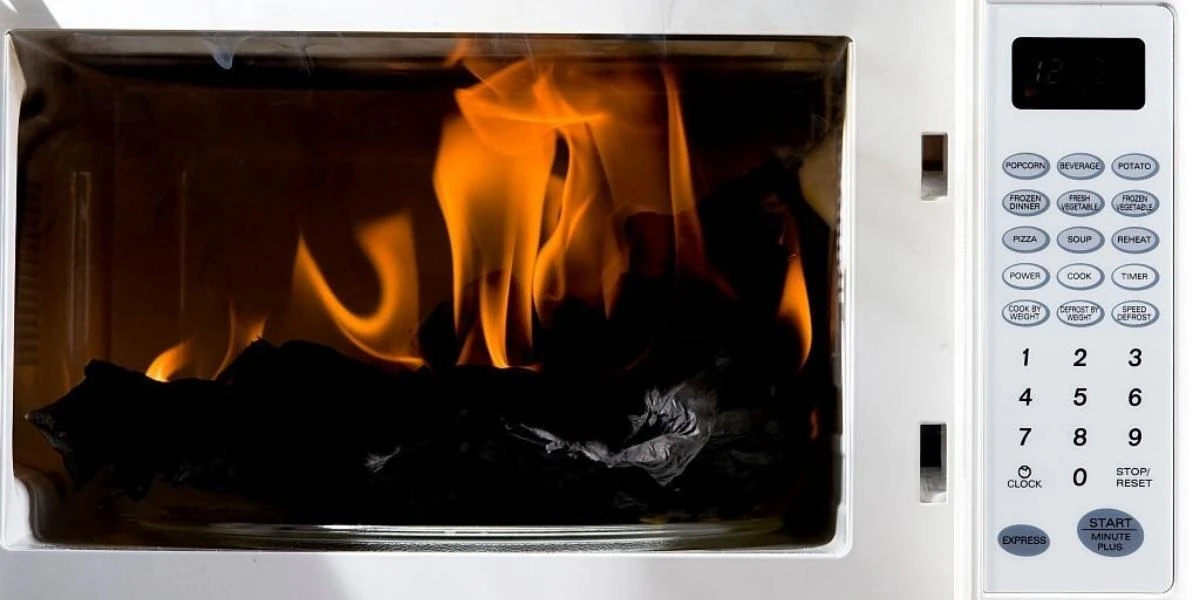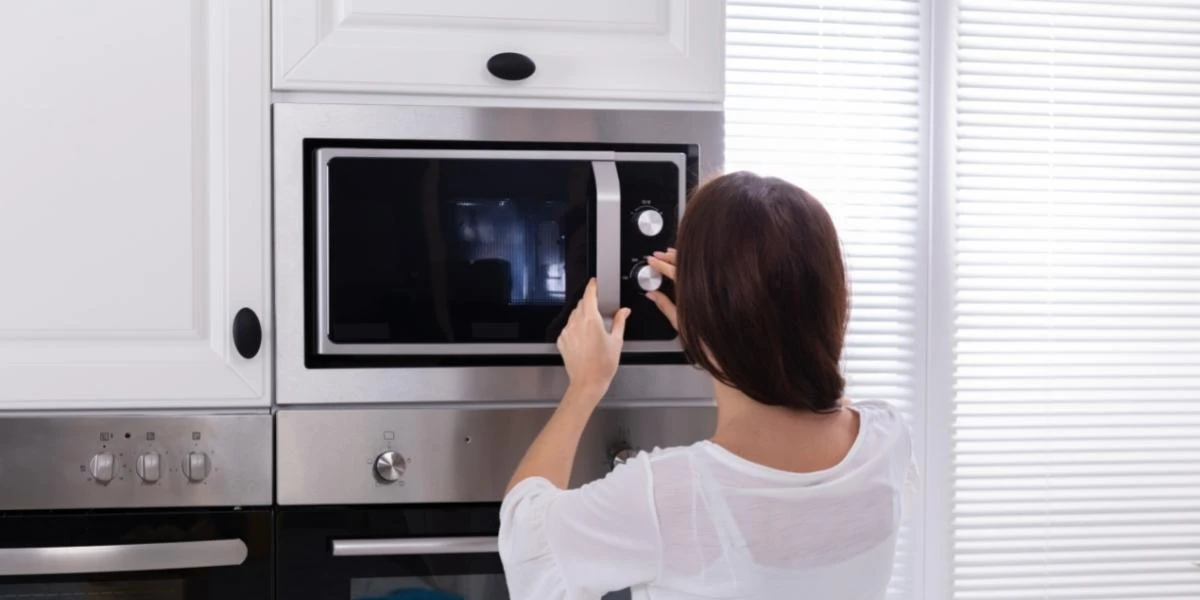WHY MICROWAVE CATCH FIRE AND WHAT TO DO WHEN IT SPARKS

Image Credits: istockphoto
Microwaves offer a quick and convenient way to heat food or prepare a quick meal. However, like any other electric appliances, microwaves run a risk of catching fire. Although microwaves are among the safest cooking appliances one can own, they can pose a fire hazard if not careful. Even the best microwaves can experience issues and catch fire.
Essential Takeaways:
What to do if your Microwave caught fire?
You should follow the below tips to control the microwave fire.
Don’t Open the Oven Door:
Keep the microwave door closed to contain the fire. Opening the door could allow oxygen in and spread the fire.
Unplug or Disconnect:
Cutting off the power can help prevent the fire from spreading. If you plugged in the microwave at a distance then you should unplug it ASAP. If the plug is not reachable you can use a platic stick to disconnect or switch off the power to the microwave.
Call Emergency Services:
If the fire is not easily manageable, don’t hesitate to call emergency services (fire department) immediately. It’s crucial to prioritize your safety.
Evacuate:
If the fire is spreading or you feel unsafe, evacuate the area. Close doors behind you to contain the fire if possible.
Use a Fire Extinguisher:
Use a fire extinguisher to extinguish the fire. Aim at the base of the flames and follow the instructions on the extinguisher.
Do Not Use Water:
Avoid using water to put out an electrical fire, as water conducts electricity and can make the situation worse. Use a fire extinguisher suitable for electrical fires.
Remember, your safety is the top priority. If you’re unsure about what to do, or if the fire is spreading, please call emergency services immediately. They are trained to handle these situations safely.
What Causes Microwave Fires?

Image Credits: istockphoto
There are numerous reasons why a microwave oven can catch fire during use or even when not in use. Here are a few reasons why your microwave can catch fire:
(A) Overheated food :
According to Bob Schiffmann, a 50-year veteran of the microwave industry and president of the International Microwave Power Institute, microwave fires usually start for the same reason that oven or stovetop, or grill fires do: “It’s simply due to [the food] overheating.” A typical microwave does not cause smoke or fire on its own. However, if an ingredient becomes overcooked, it could begin to smoke and catch fire.
Food-based fires can also occur if someone overestimates or enters the wrong cook time. Schiffman further elaborated that food-based fires “create a lot of smoke, but they tend not to be all that dangerous because the components can’t catch fire.” In case you spot smoke or fire, turn off or unplug the microwave and keep the door closed. Moreover, UL-certified microwaves can contain small fires started by overheated food.
(B) Metal and Packaging :
Another common firestarter when it comes to microwaves are metal objects and packaging left inside the cavity as you cook. The rule is simple- do not put metal in your microwave, as any metal will spark in a microwave. Some of the metal objects that you should not place in the microwave are:
Avoid microwaving aluminum foil, a type of metal that is not safe to put in your microwave.
(C) Putting plastic into your microwave :
If you read that a bowl or plate is “microwave-safe,” you can place it inside
the cavity without causing sparks or fire. Hence, it is best to double-check
before putting something inside the microwave.
Some materials such as styrofoam, regular plastic wrap, and plastic
containers can heat up, melt in the microwave, and start a fire. Like yogurt
containers, do not microwave single-use containers, as they are not
microwave-safe.
(D) Using paper products :
While some paper products are microwaveable, others will catch fire. So you
should check if they are microwave-safe before putting them in the
microwave.
Here are some of the products that you should check before microwaving:
(E) Microwaving grapes or chili peppers :
Although it might sound odd, grapes and chili peppers will catch fire in the microwave. Grapes will spark in the microwave and can start a fire. Meanwhile, chili peppers contain capsaicin, which is flammable.
(H) Electrical issues :
Some electrical issues can lead to microwave fires. If the supply shorts out, it could cause a fire. Occasionally, a power surge will turn the microwave on, causing it to run continuously until you shut it down, leading to a fire.
Why Do Microwaves Spark?

Image Credits: istockphoto
Sparking in the oven cavity is not a sign of microwave malfunction, nor are they especially dangerous. Sparks and zaps occur because the energy waves that should be absorbed by your food instead bounce around between objects. As the energy gets concentrated in a small space, it reacts with something in the air or food, creating sparks.
Furthermore, metals with rough edges, like a ball of aluminum foil or fork, generally spark. Recycled papers might spark if they contain metal flecks. Meanwhile, some food packaging might contain hidden metal, and non-microwave-safe bowls and plates might also spark. Sparks inside the oven cavity are nothing to be concerned about.
Microwave sparks are plasma, which is the fourth state of matter. According to Aaron Slepkov, a Physics professor at Trent University in Ontario, plasma feeds off microwave energy. So if you glance up at the top of the oven cavity after you see the initial sparks, you might see plasma dancing around for the duration of the cooking time.
How to Avoid Microwave Fire

Image Credits: unsplash
Read the manufacturer’s guide : The manufacturer’s guide included with your microwave provides more information on microwave safety and what you should do and shouldn’t do.
Keep the area around the microwave clear : If the microwave vents are blocked, it will trap heat and start a fire. Also, make sure there are no objects near or up against the microwave and do not place things on top of the microwave.
Do not leave the microwave unattended : It is important to stay near the microwave if you heat meals that take longer than three minutes. The longer the food cooks, the more likely it is to burn or catch fire.
Check the directions before microwaving foods : If you are preparing food in the microwave, check the packaging before putting it in the microwave. Leaving the food in the microwave for too long can set it on fire. The packaging or the food box usually has directions placed on it.
Keep children away from the microwave : Children can turn on the microwave by mistake or unknowingly place dangerous things into a microwave. Therefore, it is better to place the microwave higher up so young children cannot reach it.
Do not use the microwave if the power cords are damaged : If something is wrong with your microwave’s power outlet it is plugged into, it could spark and cause a fire. So you should make sure all power cords and plugs are functioning properly and that the cord is intact.
